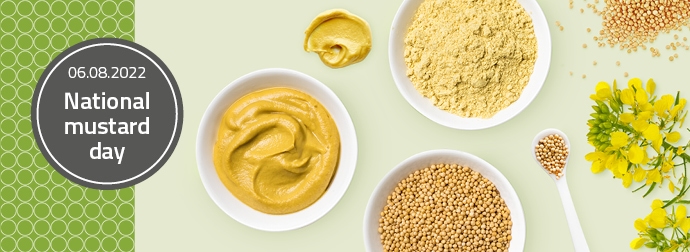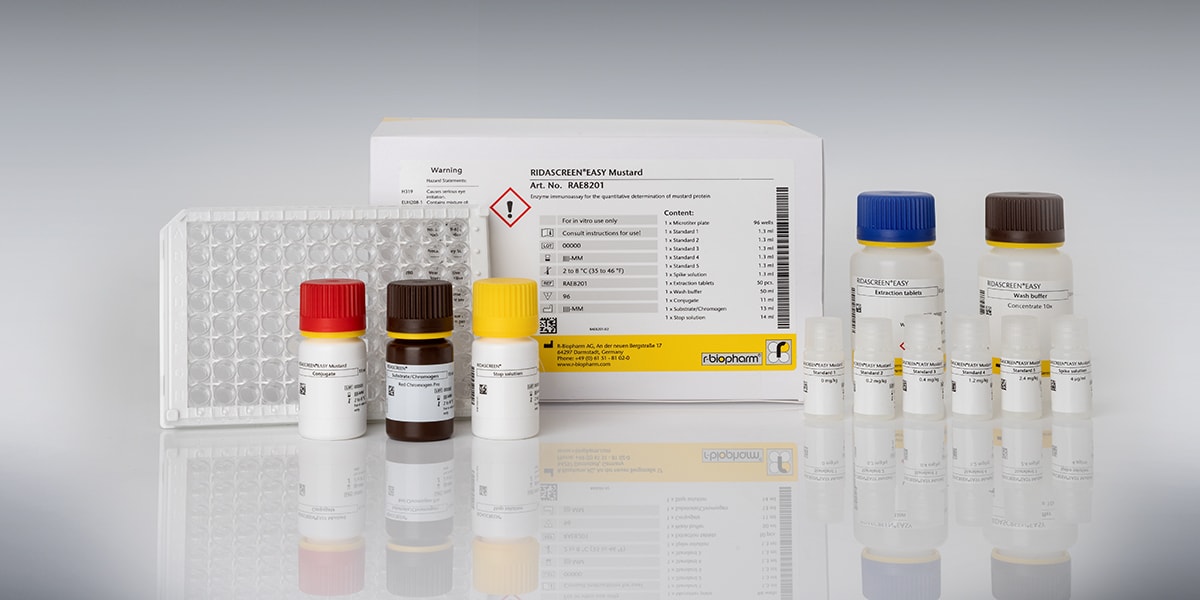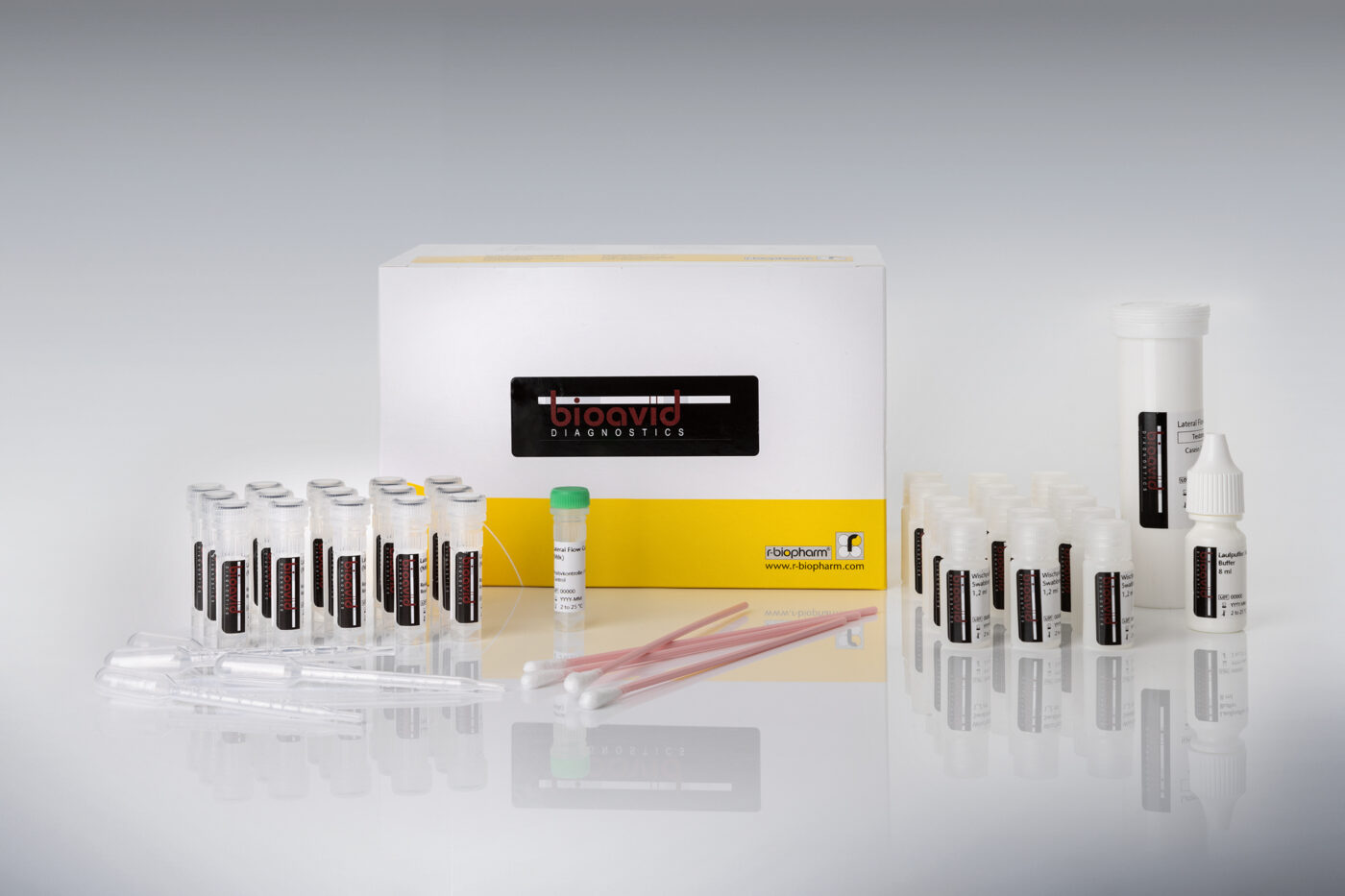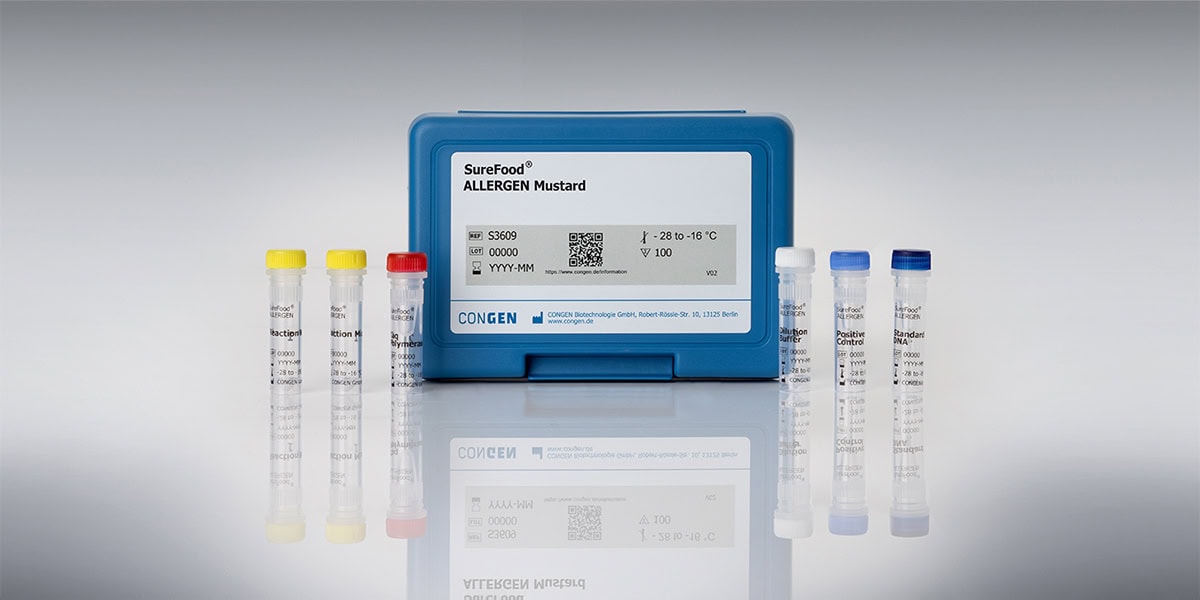
Recent news in Food & Feed Analysis
- Home
- /
- National mustard day
National mustard day

Mustard is categorized as a spice, globally ones of the most important ones, and belongs to the Brassicaceae family of plants. Other plants in this family include for example broccoli, cabbage, and rapeseed (canola).
Types of mustard
In the cuisine and food industry, mustard is widely used, either in the form of seeds (whole seeds), mustard powder (ground seeds) or, above all, as a seasoning paste, the so-called table mustard or mustard when preparing and consuming food.
Amongst the around 40 species of mustard plants in the Brassicaceae family, three types are primarily commercially cultivated throughout the world and used:
- White/yellow mustard: Sinapis alba
- Brown mustard: Brassica juncea
- Black mustard: Brassica nigra
[vc_tabs][vc_tab title=”Sinapis alba ” tab_id=”1659611171-1-71″]
- The seeds are light straw yellow-colored
- The most used mustard species in Europe
- In warm regions, the mustard plant is mainly cultivated for its seeds, as a spice &for its high oil content
- The seeds are often used for pickling gherkins or mixed pickles or making sausages
- In cold regions it is grown as catch crop, green fodder crop or as green manure
- White mustard is milder in taste than other mustard species
[/vc_tab][vc_tab title=”Brassica nigra ” tab_id=”1659611171-2-71″]
- The seeds are blackish brown-red & are slightly bitter and more pungent than the seeds of the white ( alba) or brown (B. juncea) mustard
- Generally used as spice, potherb & as source of oil
- Black mustard oil is also utilized for production of soap and for medicinal remedies
- When black mustard seeds are grounded to meal and mixed with vinegar, a pungent condiment occurs
- Traditional Dijon mustard originated in the city of Dijon in France, is very popular and made from black or brown mustard seeds blended with wine (vinegar) and/or verjuice and seasonings
[/vc_tab][vc_tab title=”Brassica juncea ” tab_id=”1659615734967-2-8″]
- The seeds are mainly used as condiment, in the Indian subcontinent for oil production, and in Asiatic countries like China and Japan the mustard plant is used as a root and leaf vegetable
- Due to its higher growth and its pods, which are less prone to bursting, it is more suitable for agricultural cultivation & mechanical harvesting than nigra. Therefore, brown mustard enables less labor-intensive & cost-effective production and increasingly replaces cultivation of black mustard
- It is also used as fodder and in traditional medicine, e.g., as diuretic or stimulant
[/vc_tab][/vc_tabs]
Allergy
Mustard can cause allergic reactions. There are two types of mustard plants with allergens recognized by the World Health Organization, Brown Mustard (Brassica juncea) and Yellow Mustard (Sinapis alba). Four of the proteins from white mustard, named, Sin a 1, Sin a 2, Sin a 3 and Sin a 4, and only one protein from brown mustard, Bra j 1, have been identified as having allergenic potential.
The food-labelling Regulation (EC) 1169/2011, lists 14 allergens, including mustard, the presence of which must be clearly indicated on the label as part of the ingredients list. However, it is not clearly stated which mustard species are included in these labeling obligations.
Mustard allergy foods to avoid
Mustard, especially the seeds, are used as or in food in various different forms and the risk of contamination along the line is high; it could already occur either during manufacturing / harvesting or due to the presence of mustard plants in raw materials. Furthermore in restaurants or snack stands for instance, where numerous products with mustard are handled.
Processed foods are frequently mixed with natural mustard seeds:
- Pickled gherkins or small white onions
As an ingredient in many ready-cooked dishes:
- Crackers, chips, pretzels, appetizers
- Various flours, seasonings and flavoring agents
- Dehydrated products for soups / stocks
- Potato salad
- Processed meats and deli meat
- Sausage
- Water binding agents
- Emulsifiers
As mustard condiment:
- Spicy sauces, fish sauce / paste
- Vinaigrettes, mayonnaises
Detecting mustard in food products
Are you interested in more information about possible mustard detection methods?
Or for qPCR detection – visit:- SureFood® ALLERGEN Mustard (Art. No. S3609)
- SureFood® ALLERGEN 4plex Soya / Celery / Mustard + IAC (Art. No. 3401)



